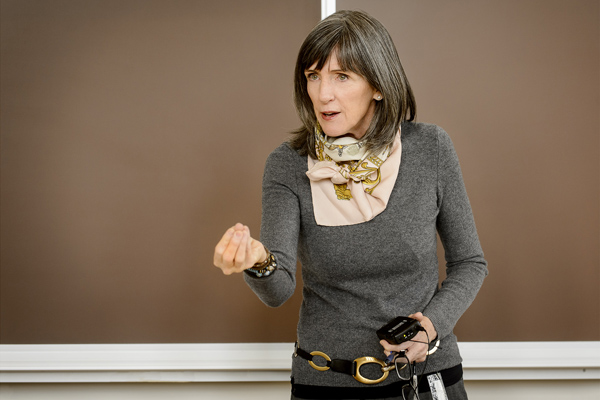The law’s role in supporting sustainable cities

Toward the end of former Environmental Protection Agency administrator Carol Browner’s eight-year stint on the job, the EPA examined the history of the Clean Air Act and compared the costs to industry to achieve air pollution reduction targets and to the societal benefits achieved by these measures. The result: industry costs were lower—and the societal benefits higher—than had been predicted.
The reason, Browner explained during a recent lecture at Northeastern’s School of Law, was that “once you set an environmental standard, you create a market” to meet the standard. For example, she pointed to Congress’ decision in 1990 to ban chlorofluorocarbons, a chemical known to deplete the stratospheric ozone layer. That didn’t mean refrigerators and air conditioners stopped being made; instead, Browner said, “companies made investments and brought a new technology to the market that was faster and cheaper than people had anticipated.”
“When we think about the role of regulations as we think about the issue of climate change, we need to remember that history,” Browner said. “When we look at the science, when we have a moral and ethical approach, when we set these standards that aren’t based on an economic analysis, we will rise to the occasion and find a very good solution.”
Browner delivered the keynote address last month at a conference titled Lawyering for the Sustainable City. Browner has served under two U.S. presidents: she worked as the administrator of the Environmental Protection Agency in the Clinton administration from 1993 to 2001 and as director of the White House Office of Energy and Climate Change Policy under President Obama from 2009 to 2011.
The daylong conference continued with a series of panel discussions and breakout sessions focused on a range of issues, including rising sea levels, urban transportation and city infrastructure, rezoning cities to make water management more resilient, and new legal approaches to obtaining, using, and conserving energy.
Sustainability is one of Northeastern’s core research themes and solving challenges in the field requires an interdisciplinary approach, according to law school Dean Jeremy Paul, who delivered opening remarks. The conference aligned with that strategy, drawing academic and industry experts from disciplines including law, engineering, business, environmental studies, and urban architecture and landscape.
Paul noted that Northeastern law students are taught the value of working across disciplines beginning on their first day on campus. “When clients walk into your office, they don’t say, ‘I have a torts problem.’ They tell you a story about something that happened to them,” he said. “This is also true on a broader level. If someone wants to build a bridge or improve a city’s energy efficiency or reduce air pollution, they don’t walk into your office saying I have a legal problem or engineering problem. They say, ‘I want to build a bridge.’ Putting people together from multiple disciplines as this conference does is much more directly responsive to the human needs we’re all trying to serve.”
He added: “No one’s done more to head off cities’ environmental problems than our keynote speaker.”
For her part, Browner concluded her keynote address by arguing that nature itself can often help solve challenges in urban sustainability. One example—which she called “one of my favorite things I did at the EPA”—focused on the federal agency threatening litigation against New York City over the diminishing quality of the Big Apple’s drinking water. Browner said the EPA worked with city and state officials in the 1990s to find the solution at the water’s source—the Adirondacks—and increase protections of the watershed. An alternative solution would’ve been to build a water treatment facility.
“We were able to prevent a problem rather than treat a problem,” Browner said. She added that as more cities discuss sustainability, resilience, and adaptation, “we’re going to have to think about how can we prevent the problems and how can we let nature help us.”





